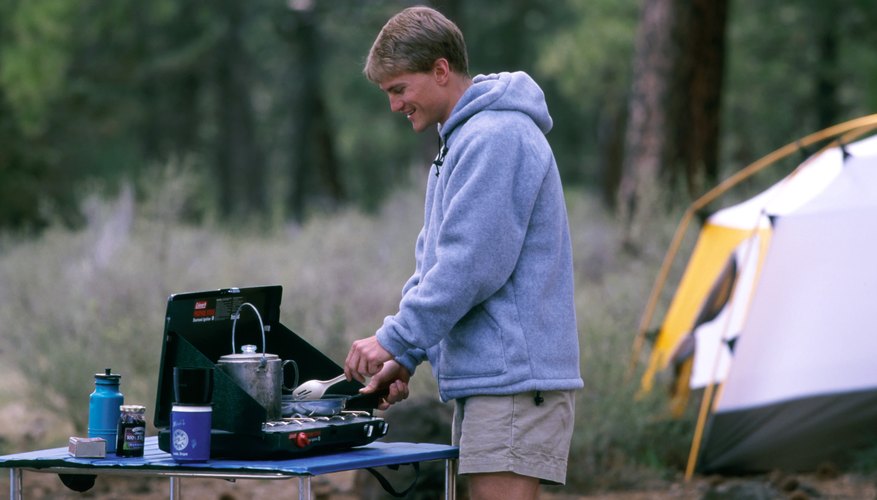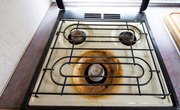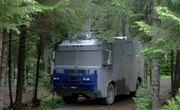
Liquid fueled camping stoves are light, portable and efficient. Highly flammable liquids under pressure can be hazardous. By understanding your equipment and following a few safety rules, a liquid fueled camp stove can be a safe way to prepare a hot meal, even miles into the wilderness.
Function
Liquid fuel camping stoves operate by pressurizing a tank of air and liquid fuel, commonly white gas, or unleaded gasoline. Vapors from the fuel air mixture are sent through a valve to a burner where it is ignited. Your cookware sits on top just like a home stove.
Fueling
Always read the instructions that come with your specific stove. Liquid fuels must be stored and carried in a strong metal container that does not leak. When filling your stove, use a small funnel to prevent spills. Do not overfill your stove. Air space inside the tank is vital to proper function, and if liquid fuel is pushed through the burner you’ll have a fire that can quickly spread. Securely tighten the fuel tank cap.
Lighting
Before lighting your stove, be sure any spilled fuel has evaporated. Close all fuel can lids securely, and move fuel cans downwind from your cooking area, as invisible vapors can be ignited by a spark or flame far away. If you see liquid fuel burning, immediately turn off the burner valve, and check your stove for damage. Once the stove is lit, be sure to keep flammable items away from the hot burner. If you run out of fuel during cooking, wait until the stove has cooled before attempting to refill it.
Cooking
Be sure to secure your stove on a solid level surface. Not only will tipping spill hot food, upsetting the stove while lit may start a fire, or spill burning liquid fuel from the burner. Never cook inside a tent as carbon monoxide gas can quickly overcome campers or set tent materials on fire.
Travel and Storage
Do not place a liquid fueled camp stove close to a campfire. The excess heat may cause an explosion. When traveling, remove all fuel from the stove and leave the cap off to let all remaining fuel evaporate, as airlines will not allow luggage that smells like gasoline. Pack and store your stove to protect the small valves and tubes that feed the burner.
References
Writer Bio
Over a span of 20 years, Hans Dersch has written copy in advertising, marketing, public relations, fundraising, political campaigns and grant proposals. He holds a Bachelor of Science in Advertising from the University of Texas at Austin.



